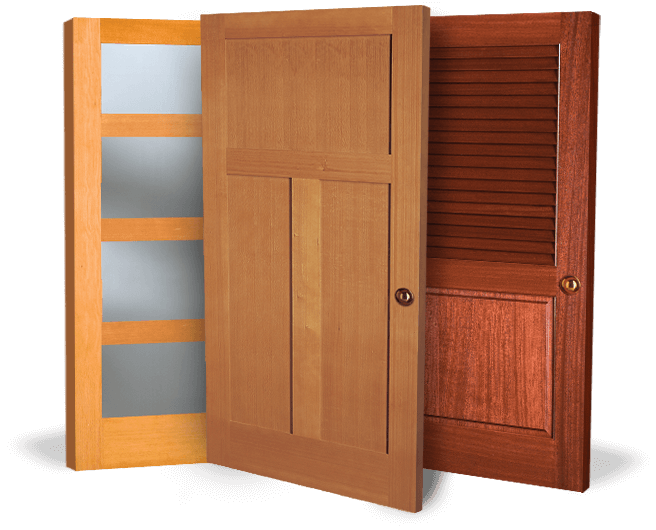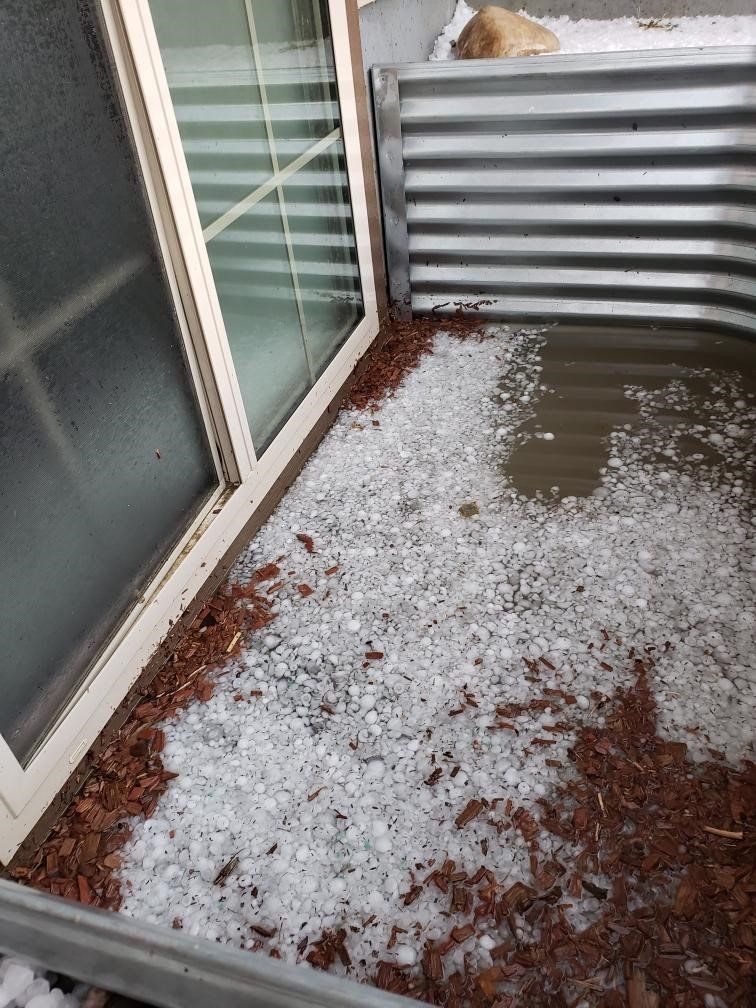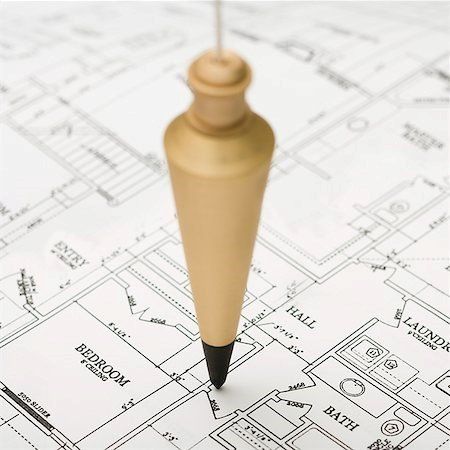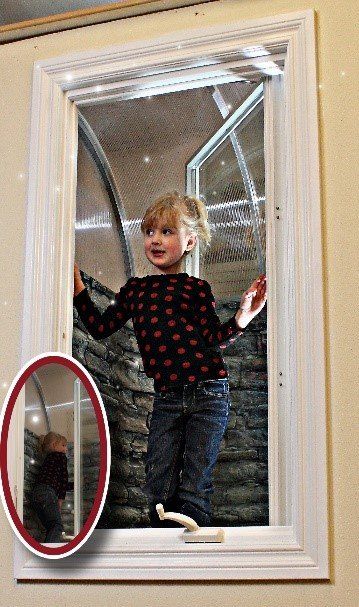QUESTIONS ANSWERED
New Paragraph
Window and Door DIY information- scroll down
HAVE A QUESTION THAT IS NOT HERE?
We are here to help. No Pressure. Send us a message and we’ll be in touch.
Contact Us
Thanks for your question. This will go directly to Brett, the owner. Please wait calmly, until I get to my email. I will be back in touch soon.
Otherwise call (406)259-5581.
Oops, there was an error sending your message.
Please try again later
Please try again later

By Brett DiPasquale
•
30 Apr, 2024
Upgrading interior doors can transform a space, enhancing aesthetics and functionality. It's a cost-effective way to modernize your home, increase property value, and improve energy efficiency. With a variety of styles and materials available, replacing interior doors allows for customization to match your decor and lifestyle. Plus, it can reduce noise, increase privacy, and create a seamless flow between rooms. Contact your Reynolds Representative today!

By Admin
•
10 Sep, 2020
Hi everyone, thats my brother, Gabe. My dad, Brett DiPasquale, launched Construction by Design in 1993, sparking my journey into the family business. Childhood memories flood back: savoring ruby red grapefruit juice, kindergarten antics, and helping post flyers for Dad's budding enterprise. As I grew, so did my role—summer gigs cleaning up job sites, learning the ropes alongside my grandpa Al, and embracing Dad's ethos of hard work and family values. Despite his later stint as a firefighter, Dad remained dedicated to growing our business, which evolved into Reynolds Window and Door. Retirementfrom firefighting hasn't slowed him; he's all about expanding our company while cherishing family adventures. Here at Reynolds, family isn't just a concept—it's our culture, thanks to Dad's unwavering commitment.

By Admin
•
11 Aug, 2020
Windows have a long and fascinating history that stretches back thousands of years. Here's a brief overview of their evolution: Ancient Origins: The concept of windows can be traced back to ancient civilizations such as Mesopotamia, Egypt, and ancient China. Early windows were often openings in walls covered with materials like cloth, animal hides, or paper to allow light and air into buildings while offering some protection from the elements. Ancient Rome: The ancient Romans made significant advancements in window design, using glass to create small panes for windows in public buildings, villas, and wealthy homes. These early glass windows were usually small and thick, providing limited visibility and insulation. Medieval Europe: In medieval Europe, windows became more common in architectural design, particularly in churches, castles, and monasteries. However, glass was still expensive and difficult to produce, so windows were often small and made of leaded glass or thin slices of translucent stone called "luminary." The Renaissance: During the Renaissance period, there was a resurgence of interest in classical architecture and design principles. This led to innovations in window design, including larger windows with more elaborate tracery and decorative elements. Stained glass windows became popular in churches and cathedrals, showcasing intricate religious imagery and narratives. Industrial Revolution: The Industrial Revolution brought significant advancements in glass manufacturing technology, making glass more affordable and accessible to the general population. Mass-produced glass windows became standard features in homes, offices, and commercial buildings, allowing for larger and more functional openings to be created. Modern Era: In the 20th and 21st centuries, window technology continued to evolve, with the development of energy-efficient glazing, insulated glass units, and advanced framing materials. Modern windows are designed not only to provide light and ventilation but also to improve energy efficiency, sound insulation, and security. Today, windows are integral components of architectural design, offering functionality, aesthetics, and environmental performance. From their humble beginnings as simple openings in walls to the sophisticated systems found in contemporary buildings, windows have undergone a remarkable transformation throughout history.

By Admin
•
30 Jul, 2020
Window well covers serve several important purposes and provide several benefits: Safety: One of the primary reasons to have a window well cover is safety. Window wells without covers can pose a significant hazard, especially for children and pets. Without a cover, window wells can collect water, debris, and even snow, creating a potential drowning or fall hazard. A cover helps prevent accidents by acting as a barrier between the window well and the surrounding environment. Prevention of Water Damage: Window wells are prone to collecting water, particularly during heavy rainstorms or melting snow. This water can seep into the basement through the window, causing water damage, mold, and mildew. A window well cover helps keep water out of the window well, reducing the risk of water infiltration and associated damage to the basement. Security: Window well covers can also enhance security by preventing unauthorized access to the basement through the window well. A sturdy cover acts as a deterrent to intruders, making it more difficult for them to enter the home through basement windows. Prevention of Debris Buildup: Without a cover, window wells can accumulate leaves, branches, and other debris, creating a mess and potentially clogging drainage systems. A cover helps keep debris out of the window well, reducing maintenance requirements and preserving the aesthetic appearance of the area. Improved Energy Efficiency: In addition to providing safety and protection, window well covers can also contribute to improved energy efficiency. By helping to keep water out of the window well, covers reduce the risk of air and moisture infiltration into the basement, which can lead to heat loss in winter and increased cooling costs in summer. Overall, installing a window well cover is a relatively simple and cost-effective way to enhance safety, protect your home from water damage, improve security, and promote energy efficiency. It's an investment that can provide long-term benefits and peace of mind for homeowners.

By Admin
•
15 Jul, 2020
To install a window properly, a carpenter needs to have a solid understanding of several key concepts and techniques: Measurement : Accurate measurement is essential to ensure that the window fits correctly into the opening. This includes measuring the width, height, and depth of the window opening, as well as accounting for any irregularities or obstructions. Materials and Tools : A carpenter should be familiar with the materials and tools required for window installation, which may include caulk, shims, screws or nails, a level, a tape measure, a hammer, a pry bar, and a caulking gun, among others. Weatherproofing : Proper weatherproofing is crucial to prevent water infiltration and air leakage around the window. This involves applying flashing tape or membrane around the perimeter of the window opening and sealing any gaps with caulk. Shimming and Leveling : Windows must be installed level and plumb to ensure proper operation and prevent issues such as drafts and water leaks. Shims are used to adjust the position of the window within the opening until it is level and square. Anchoring and Fastening : Windows should be securely anchored to the framing of the building using screws or nails. Carpenter should know where and how to install fasteners to ensure structural integrity and stability. Insulation : Insulating around the window frame is important for energy efficiency and thermal comfort. Carpenter should know how to properly insulate gaps between the window frame and the rough opening using expanding foam or fiberglass insulation. Finishing Touches : Once the window is installed, carpenter may need to add trim around the interior and/or exterior of the window to cover any gaps and provide a finished appearance. This may involve cutting and installing trim pieces using a saw and nails or screws. Safety : Lastly, carpenter should prioritize safety throughout the installation process. This includes using proper personal protective equipment (PPE), following manufacturer instructions and industry best practices, and ensuring a stable work platform. ALWAYS FOLLOW MANUFACTURER INSTRUCTIONS FOR WARRANTY VALIDATION Overall, window installation requires a combination of technical knowledge, practical skills, and attention to detail to ensure a professional and long-lasting result.

By Admin
•
29 May, 2020
Egress Window Code: Egress window code refers to building regulations that mandate the size, location, and accessibility of windows in residential buildings, particularly in bedrooms and basement areas. The primary purpose of egress windows is to provide a safe means of escape in case of emergencies, such as fires or other disasters. Egress window codes typically specify minimum dimensions for window openings to ensure that occupants, including adults and children, can exit the building quickly and safely. These dimensions may vary depending on local building codes and regulations. In addition to size requirements, egress windows must also be operable without the use of keys, tools, or special knowledge. They should be easy to open and large enough to accommodate the passage of occupants, including those with mobility challenges. Safety Glass Code: Safety glass code refers to building regulations that require certain types of glass to be used in specific locations within a building to reduce the risk of injury in case of breakage. Safety glass is designed to minimize the likelihood of sharp shards or fragments when broken, thereby enhancing occupant safety. Common types of safety glass include tempered glass and laminated glass. Tempered glass is heat-treated to increase its strength and shatter resistance, while laminated glass consists of multiple layers of glass bonded together with an interlayer, typically made of polyvinyl butyral (PVB) or ethylene-vinyl acetate (EVA). Safety glass codes may require the use of safety glass in certain locations such as doors, sidelights, windows near doors, and windows located close to the floor. These requirements help prevent injuries from accidental impact or glass breakage, particularly in high-traffic areas or areas accessible to children. Both egress window code and safety glass code are important aspects of building regulations aimed at ensuring occupant safety and well-being in residential and commercial buildings. Compliance with these codes helps protect occupants from harm and ensures that buildings meet minimum safety standards established by local authorities.
By Admin
•
07 Feb, 2020
Here's a brief explanation of different window operations: Fixed Windows: Fixed windows, also known as picture windows, do not open or operate. They are designed solely to provide a clear view of the outdoors and allow natural light to enter the space. Fixed windows are commonly used in areas where ventilation is not required or in combination with operable windows to create larger window configurations. Casement Windows: Casement windows are hinged on one side and swing outward like a door when opened. They are operated using a crank mechanism or handle and are ideal for maximizing ventilation and airflow. Casement windows seal tightly when closed, offering excellent energy efficiency and weather resistance. Double-Hung Windows: Double-hung windows feature two sashes (movable panels) that slide vertically within the frame. Both the top and bottom sashes can be opened, allowing for flexible ventilation options. Double-hung windows are easy to operate and are commonly used in traditional and modern home designs. Single-Hung Windows: Single-hung windows are similar to double-hung windows but only the bottom sash is operable. The top sash remains fixed in place. Single-hung windows are often more affordable than double-hung windows and are suitable for applications where only one operable panel is needed. Sliding Windows: Sliding windows, also known as gliding or slider windows, feature one or more panels that slide horizontally within the frame. They are operated by pushing or pulling the panels along a track. Sliding windows are easy to operate and are commonly used in contemporary and modern home designs. Awning Windows: Awning windows are hinged at the top and open outward from the bottom, creating an awning-like effect when opened. They are operated using a crank mechanism or handle and are ideal for providing ventilation while keeping out rain and debris. Awning windows are often installed above or below other window types for added ventilation and flexibility. These are some of the most common types of window operations, each offering unique benefits and suitability for different architectural styles and preferences. The choice of window operation depends on factors such as ventilation needs, aesthetic preferences, and practical considerations.
By Admin
•
03 Jan, 2020
Maintaining windows and doors is essential for preserving their functionality, appearance, and energy efficiency. Here are some general maintenance tips: Regular Cleaning: Clean windows and doors regularly using mild soap and water. Avoid harsh chemicals or abrasive cleaners that can damage the surface or finish. Clean both the interior and exterior surfaces, including frames, sashes, and hardware. Inspect Seals and Weatherstripping: Check the seals and weatherstripping around windows and doors for signs of wear or damage. Replace any worn or deteriorated seals to prevent air and water leaks. Lubricate Moving Parts: Lubricate hinges, tracks, rollers, and other moving parts with a silicone-based lubricant to ensure smooth operation. Remove dirt and debris from tracks and channels to prevent binding or sticking. Check for Damage: Inspect windows and doors for any signs of damage, such as cracks, chips, or warping. Repair minor damage promptly to prevent further deterioration and maintain structural integrity. Trim Vegetation: Trim trees, bushes, and other vegetation near windows and doors to prevent branches from rubbing against the glass or frame. This helps prevent scratches and damage and reduces the risk of pests entering your home. Monitor Condensation: Keep an eye out for condensation on windows, especially during colder months. Excessive condensation can indicate poor insulation or ventilation issues that need to be addressed. Secure Hardware: Check locks, handles, and other hardware to ensure they are functioning correctly and securely fastened. Tighten any loose screws or bolts and replace any damaged hardware as needed. Schedule Professional Inspection: Consider scheduling an annual inspection by a qualified professional to assess the condition of your windows and doors. A professional can identify any underlying issues, perform necessary repairs, and provide recommendations for improving energy efficiency and performance. Remember, while regular maintenance can help prevent problems and prolong the lifespan of your windows and doors, some issues may require the expertise of a professional. If you encounter significant damage, persistent leaks, or other problems beyond your ability to repair, don't hesitate to contact a reputable window and door repair company for assistance. They can diagnose the issue accurately and perform repairs or replacements as needed to ensure the continued safety, security, and efficiency of your windows and doors
By Admin
•
10 Dec, 2019
Here are several types of glass commonly used in windows, including vacuum glass and photoelectric glass: Single Pane Glass: Single pane glass consists of a single sheet of glass without any additional layers. While it is the simplest and most economical option, it offers minimal insulation and may not be suitable for climates with extreme temperatures. Double Pane Glass (Insulated Glass Units - IGUs): Double pane glass consists of two panes of glass separated by a spacer and sealed around the edges to create an airtight unit. The space between the panes is typically filled with air or inert gases like argon or krypton, providing enhanced insulation and soundproofing compared to single pane glass. Triple Pane Glass: Triple pane glass features three layers of glass separated by spacers and sealed around the edges. This configuration provides even greater insulation and soundproofing properties than double pane glass, making it ideal for energy-efficient homes and buildings. Low-E (Low-Emissivity) Glass: Low-E glass has a microscopically thin coating applied to one or more surfaces of the glass. This coating reflects heat energy, helping to keep indoor spaces cooler in summer and warmer in winter while allowing natural light to pass through. Low-E glass can be used in single, double, or triple pane configurations. There are at least 5 different types of lo-e, which will drastically affect the performance of the glass. Contact a window professional for assistance. Vacuum Insulated Glass (VIG): Vacuum insulated glass, also known as vacuum glazing, consists of two or more glass panes separated by a vacuum rather than gas-filled space. The absence of air between the panes minimizes heat transfer by convection and conduction, resulting in superior thermal insulation properties. VIG offers excellent energy efficiency and can be used in various window applications. Photochromic Glass: Photochromic glass, also known as self-tinting or smart glass, contains materials that change color or opacity in response to light exposure. When exposed to sunlight, the glass darkens to reduce glare and heat transmission, providing comfort and energy savings. Photochromic glass can enhance indoor comfort and reduce the need for additional shading devices. Electrochromic Glass: Electrochromic glass, similar to photochromic glass, can change its tint or opacity electronically. By applying an electric current, the glass can switch between clear and tinted states, offering control over privacy, glare, and heat gain. Electrochromic glass is often used in dynamic glazing systems for commercial buildings and high-end residential projects. These are just a few examples of the many types of glass available for windows, each offering unique properties and benefits for various applications and climates. Choosing the right type of glass depends on factors such as energy efficiency requirements, aesthetic preferences, and budget constraints.
By Admin
•
07 Nov, 2019
Wooden Entry Doors: Wooden entry doors are classic and timeless, offering warmth and natural beauty to any home. They are available in various wood species, such as oak, mahogany, and cherry, each with its own unique grain pattern and color. These doors can be customized with different panel configurations, glass inserts, and decorative elements, allowing homeowners to achieve a traditional or contemporary look. Wooden doors require regular maintenance, including painting or staining to protect them from the elements and prevent warping or rotting over time. While they offer excellent insulation properties, wooden doors may be more susceptible to damage from moisture, sunlight, and pests compared to other materials. Fiberglass Entry Doors: Fiberglass entry doors mimic the look of wood but offer enhanced durability and low maintenance. They are constructed from fiberglass composite materials that resist warping, rotting, and scratching. These doors are available in a wide range of styles, finishes, and textures, including smooth, wood-grain, and embossed designs, providing flexibility in design options. Fiberglass doors typically have a foam core insulation, providing excellent energy efficiency and thermal performance. They are relatively lightweight and easy to install, making them a popular choice for both new construction and replacement projects. Steel Entry Doors: Steel entry doors are known for their strength, security, and affordability. They are constructed from galvanized steel and reinforced with a core of foam insulation, providing excellent resistance against intruders and extreme weather conditions. These doors are available in a variety of styles, panel configurations, and finishes, including smooth or textured surfaces and pre-painted colors. Steel doors require minimal maintenance and are resistant to warping, cracking, and shrinking. They can be easily cleaned with soap and water. While steel doors offer superior security and durability, they may lack the aesthetic appeal of wood or fiberglass doors and can be prone to dents or scratches. Glass Entry Doors: Glass entry doors are modern and stylish, adding elegance and sophistication to any entryway. They feature large glass panels that allow natural light to enter the home and create an open, airy feel. These doors are often framed with materials such as aluminum, steel, or wood, providing structural support and stability. They may feature single or double glazing for improved energy efficiency and sound insulation. Glass doors are available in various designs, including full-view, half-lite, and decorative glass inserts, allowing homeowners to customize the level of privacy and aesthetics. While glass doors offer aesthetic appeal and light transmission, they may require more maintenance to keep the glass clean and free of smudges or fingerprints. Additionally, privacy concerns may arise depending on the level of transparency. Each type of entry door offers distinct advantages and considerations, allowing homeowners to choose the option that best suits their needs, preferences, and budget.
By Admin
•
25 Jul, 2019
Identifying the brand of old windows or doors can sometimes be challenging, especially if there are no visible markings or labels. However, there are several methods you can try: Manufacturer's Markings: Look for any labels, stickers, or markings on the window frame, sash, or hardware. These markings often include the manufacturer's name, logo, or product information. Check all visible surfaces, including the corners and edges of the frame. Inspect the Glass: Sometimes, manufacturers may etch their logo or brand name onto the glass itself, usually in one of the corners. Look closely at the edges of the glass panes for any inscriptions. Research Common Brands: If you're unable to find any markings, research common window and door brands from the time period when your windows were installed. This may help you narrow down the possibilities based on the style, design, and features of your windows. Consult Documentation: If you have any documentation related to the installation or purchase of the windows, such as receipts, invoices, or warranty information, check for references to the manufacturer or brand. Contact a Professional: If you're still unable to identify the brand, consider contacting a professional window installer or contractor. They may have experience with a wide range of window brands and may be able to recognize the manufacturer based on the design and construction of the windows. Online Forums or Communities: Posting clear photos of your windows in online forums or communities dedicated to home improvement or vintage home restoration may also help you identify the brand. Other enthusiasts or professionals may recognize the windows based on their appearance. 7. If you're searching for the window or door brand of older windows and you have access to the American Architectural Manufacturers Association (AAMA) sticker, here's how you can proceed: Manufacturer's Name: The AAMA sticker typically contains information about the manufacturer, including the company name or logo. Look for any text or logos that indicate the manufacturer's identity. Sometimes, the brand name may be abbreviated or appear in a stylized format, so be sure to examine the sticker closely. Product Information: The AAMA sticker may also include specific product information, such as model numbers, series names, or manufacturing codes. This information can be useful for identifying the exact product line or series from the manufacturer. Certification Markings: The AAMA sticker may feature certification markings indicating that the window or door meets certain industry standards for performance, quality, or energy efficiency. These markings can help confirm the authenticity of the product and may provide additional clues about the manufacturer. Research Online: Once you have gathered information from the AAMA sticker, you can search online using the manufacturer's name, product information, or any other details obtained from the sticker. Many window manufacturers have websites where you can find product catalogs, historical information, and contact details. By carefully examining the AAMA sticker and conducting thorough research, you should be able to identify the brand of your older windows or doors. If you encounter any difficulties, don't hesitate to seek help from professionals or industry organizations.
By Admin
•
19 Jun, 2019
The NFRC label on windows stands for the National Fenestration Rating Council. It's a non-profit organization that establishes energy performance ratings for windows, doors, and skylights. The NFRC label provides consumers with standardized information about the energy efficiency of these products, allowing them to make informed decisions when purchasing windows. Here's what you'll typically find on an NFRC label and what each section means: U-Factor: This measures how well a window prevents heat from escaping your home. The lower the U-Factor, the better the window insulates. It's measured in BTUs (British Thermal Units) per hour, per square foot, per degree Fahrenheit (BTU/h·ft²·°F). Solar Heat Gain Coefficient (SHGC): This measures how well a window blocks heat from the sun. It represents the fraction of solar energy transmitted through the window. A lower SHGC indicates less solar heat gain. It's expressed as a number between 0 and 1. Visible Transmittance (VT): This measures how much light comes through the window. A higher VT means more natural light enters your home. It's also expressed as a number between 0 and 1. Air Leakage (AL): This measures how much air can pass through the window. Lower AL values indicate less air leakage. It's measured in cubic feet per minute per square foot of window area (cfm/ft²). Condensation Resistance: This measures how well the window resists condensation formation on the inside surface. The higher the condensation resistance rating, the better the window is at preventing condensation. This rating is expressed as a number between 0 and 100. SOUND PROOFING: While the NFRC label may not include an STC rating, some manufacturers may provide this information separately for their windows. Additionally, various independent organizations and testing laboratories conduct STC testing on windows and other building materials. Consumers interested in evaluating the soundproofing capabilities of windows should inquire about the STC ratings from manufacturers or consult independent test reports. This information can help them make informed decisions when selecting windows for their homes or buildings, especially if sound reduction is a primary concern. IMPORTANT: These ratings provide valuable information to consumers about the energy performance and other key characteristics of windows. By comparing NFRC labels, consumers can choose windows that best suit their climate, energy efficiency goals, and budget. !!!This is one of two comparisons to make when selecting windows; the other being the reputation of the local company.
By Admin
•
24 May, 2019
While standard sizes can have some impact on pricing, especially in terms of manufacturing efficiency and availability, the effect may not be significant for many types of windows. Here's why: Material Quality and Features: The primary factors influencing window prices are often the quality of materials used and the features included. High-quality materials, advanced energy-efficient features, and additional options such as tinting or coatings can significantly affect the price regardless of standard sizing. Customization: Many customers opt for customization even within standard sizes to meet specific aesthetic or functional requirements. Customization, such as different frame materials, colors, or hardware options, can increase the price regardless of whether the window size is standard or not. Brand and Reputation: Window brands with strong reputations for quality and reliability often command higher prices, regardless of whether they offer standard sizes or custom options. Installation Complexity: The complexity of the installation process, such as the type of window opening or the need for additional structural work, can have a more substantial impact on installation costs than the standardization of window sizes. Regional Factors: Prices can vary significantly based on factors such as regional labor costs, demand, and local building codes. These factors may outweigh any cost savings from standard sizing. While standard sizes can offer some cost advantages, they may not be the most significant factor in determining window prices for many customers. Other factors such as material quality, customization options, brand reputation, and installation complexity often play a more substantial role.
By Admin
•
10 May, 2019
Moisture between the glass panes in double pane windows typically occurs when the seal between the two panes fails. Double pane windows are designed to be airtight, with a layer of gas (usually argon or krypton) between the panes serving as insulation. However, if the seal breaks or deteriorates over time, moisture from the surrounding environment can seep into the space between the panes. This moisture can come from various sources such as condensation, rain, or humidity. Once inside, it becomes trapped between the panes, leading to a foggy or cloudy appearance. Over time, this moisture can also cause further damage to the window, including mold growth or even structural issues if left unchecked. While it's possible to temporarily alleviate the fogging by using a dehumidifier, the ultimate solution usually involves replacing the affected glass or window the seal to prevent further moisture intrusion. Call us at Reynolds, we can identify your existing window and let you know if it is under warranty (some have a 20 year warranty).

By Admin
•
19 Apr, 2019
Manufacturers typically recommend specific methods for cleaning double pane glass to maintain its integrity and appearance. Here are some general guidelines often recommended: Use Gentle Cleaners: Avoid harsh chemicals or abrasive cleaners that can damage the glass or the seal between the panes. Instead, use mild soap or a designated glass cleaner. (IF you have hard-coat LO-E at the interior, it is recommended to not use any cleaners, water only). Soft Cloth or Sponge: Use a soft cloth or sponge to apply the cleaning solution to the glass. Microfiber cloths are often recommended because they are gentle and lint-free. Avoid Excessive Moisture: When cleaning, be careful not to saturate the glass or allow excess moisture to seep between the panes. Too much moisture can exacerbate existing issues or lead to new ones, such as mold growth. Gentle Wiping Motion: Gently wipe the glass in a circular or back-and-forth motion to remove dirt and grime. Avoid using excessive pressure, especially if you notice any signs of moisture or damage between the panes. Dry Thoroughly: After cleaning, use a dry, lint-free cloth to thoroughly dry the glass surface. This helps prevent streaks and ensures that no moisture is left behind. Avoid Scratching: Be cautious not to scratch the glass surface, especially if there are any mineral deposits or stubborn stains. If necessary, you can gently scrape these off using a plastic scraper designed for glass surfaces. Regular Maintenance: Perform regular cleaning and maintenance to keep the glass in good condition. This includes cleaning both the interior and exterior surfaces of the windows. Consult Manufacturer Guidelines: Always refer to the specific cleaning recommendations provided by the manufacturer of your double pane windows, as they may have specific instructions or precautions based on the type of glass and sealant used. Following these guidelines can help you effectively clean your double pane glass while preserving its quality and lifespan.
google-site-verification: googlef6c5c972f259d6a8.html

915 Broadwater Ave
Billings MT, 59101
406.259.5581
reynoldswindows@gmail.com
Business Hours
- Mon - Fri
- -
- Sat - Sun
- Closed
Request
A Free (N0-Pressure) Consultation
Submit your request and we'll get back to you as soon as we can!
Thank you for contacting us.
We will get back to you as soon as possible
We will get back to you as soon as possible
Oops, there was an error sending your message.
Please try again later
Please try again later
Content, including images, displayed on this website is protected by copyright laws. Downloading, republication, retransmission or reproduction of content on this website is strictly prohibited. Terms of Use
| Privacy Policy

